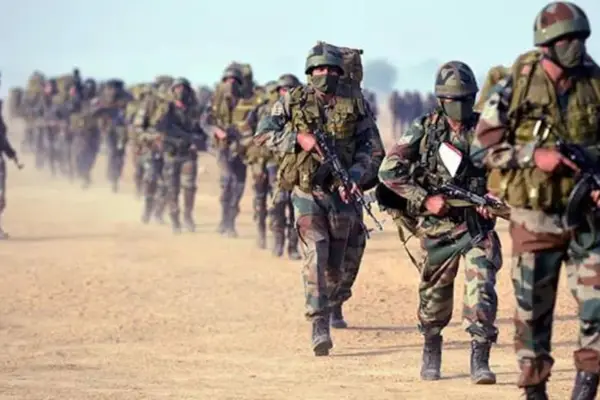Getting ready for futuristic warfare, the Indian Army has established the first of its kind, the Signals Technology Evaluation and Adaptation Group (STEAG).
About STEAG:
- As part of the army’s “On Path to Transformation” initiative, STEAG represents a significant milestone in the Year of Tech Absorption declared for 2024.
- Establishment of STEAG signifies the Indian Army’s proactive approach towards adopting cutting-edge technologies for modern warfare.
- It aims to identify and implement the most suitable technologies to enhance the Indian Army’s communication infrastructure.
Role of Corps of Signals:
- STEAG operates under the Corps of Signals, a combat support arm responsible for military communications.
- Recognizing the significance of communication superiority in military operations, the Army emphasizes the need for advanced communication technologies to gain an edge over adversaries.
Objectives of STEAG:
- STEAG aims to research, evaluate, and adapt next-generation communication technologies for defense applications.
- Focus areas include Artificial Intelligence, 5G and 6G networks, machine learning, quantum technologies, and electronic warfare systems.
Comprehensive Technology Development:
- The unit will develop tailored technologies covering wired and wireless systems, electronic exchanges, mobile communications, Software Defined Radios (SDR), and more.
- It will scout for technical advancements, manage core ICT solutions, and provide user interface support by maintenance and upgradation of contemporary technologies available in the environment.
Collaboration and Partnership:
- STEAG seeks collaboration with academia and industry to leverage cutting-edge solutions and identify suitable use-cases for defense applications.
- By bridging the gap between the Armed Forces, industry, and academia, STEAG aims to break the monopoly of select countries with advanced economies in communication technologies.
Need for STEAG:
- The establishment of STEAG is driven by the evolving nature of warfare, which includes:
- Precision and automation: Utilization of drones, laser weapons, and other advanced technologies for targeted strikes with enhanced accuracy.
- Advanced intelligence gathering: Integration of networks of sensors, satellites, and AI-powered data tools to achieve real-time battlefield awareness and identify potential threats more effectively.
- ‘Grey-zone’ tactics: The emergence of tactics operating in the unclear space between direct conflict and peace, with the scope expanded by technological advancements such as Network-centric warfare.
Other initiatives aimed at improving the future readiness of the Indian Army (IA):
- Defense Cyber Agency (DCA): A tri-service organization dedicated to addressing cyber issues and enhancing cybersecurity capabilities across the military.
- Command Cyber Operations Support Wings (CCOSWs): Established to safeguard communication and cyber missions, especially in grey-zone and conventional military operations, by providing dedicated support and expertise.
- Secure Army Mobile Bharat Version (SAMBHAV) handsets: Deployment of end-to-end secure mobile ecosystems to ensure secure communication and data exchange within the army, enhancing operational security and efficiency.
Ref:Source
| UPSC IAS Preparation Resources | |
| Current Affairs Analysis | Topperspedia |
| GS Shots | Simply Explained |
| Daily Flash Cards | Daily Quiz |



